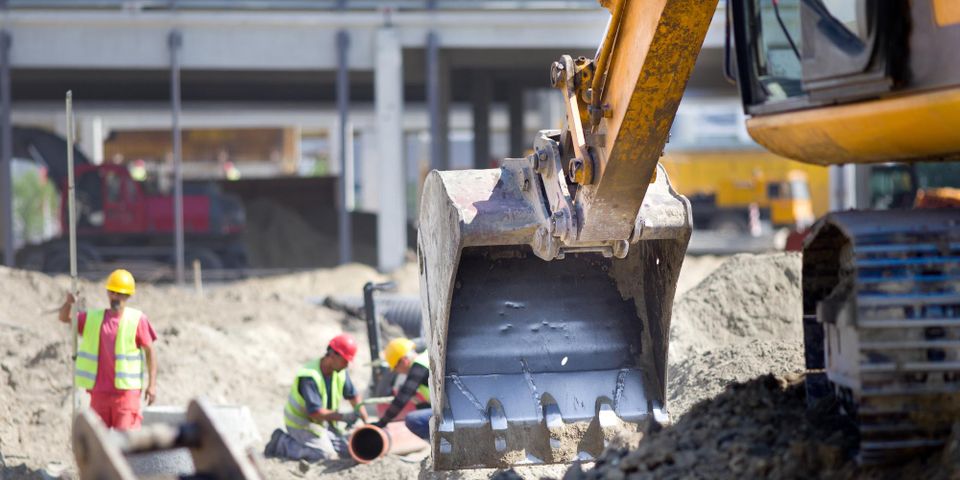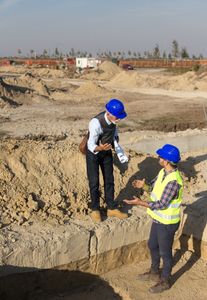When to Use GPR or EM Imaging for Your Excavation Project

Modern subterranean imaging technology provides excavation contractors and site engineers with extensive information about potential obstacles that might lie below the surface of the ground. Two of the most popular methods, ground penetrating radar and electromagnetic imaging, both offer convenient, low-cost alternatives to exploratory digging. However, there are substantial differences between the two technologies, making each better suited to different situations.
Ground Penetrating Radar
 A ground penetrating radar (GPR) unit transmits a signal into the ground, then measures the strength and delay of reflected signals. Corresponding software provides a visual map of below-ground differences based on how long it took for the signal to return, which a trained professional can then interpret.
A ground penetrating radar (GPR) unit transmits a signal into the ground, then measures the strength and delay of reflected signals. Corresponding software provides a visual map of below-ground differences based on how long it took for the signal to return, which a trained professional can then interpret.
GPR is widely used to identify underground geological features, buried utility lines, old foundations, and other abandoned structures. In loose, sandy soil, GPR can identify objects up to 30 feet down, although its range is more limited in clay or dense rock. Because these devices are mobile, they can be used to quickly cover large areas.
Electromagnetic Imaging
While GPR uses radar signals, electromagnetic imaging (EM) technology measures the electrical resistance of the soil. Two coils are placed a fixed distance apart in the ground, then an electrical signal transmits between them.
EM is capable of finding smaller objects with less ambiguity than GPR, and works well in clay-based soil other technologies may not be able to penetrate. However, it doesn’t provide much depth information, and can also be more costly than GPR due to its slower pace. For large-scale applications, many contractors use EM technology to identify anomalous areas, then employ GPR to conduct a more thorough inspection.
With the latest in subterranean imaging technology, Haggith’s Structural Scan & Inspection in Kaneohe offers electromagnetic imaging and ground penetrating radar solutions. Their team of highly trained technicians has helped builders across Hawaii avoid problems and delays by identifying obstructions and potential issues before excavation begins. Visit their website for more information on their methods and services, follow their Facebook page for projects and updates, or call (808) 239-4330 to discuss your site and request a quote.
About the Business
Have a question? Ask the experts!
Send your question

